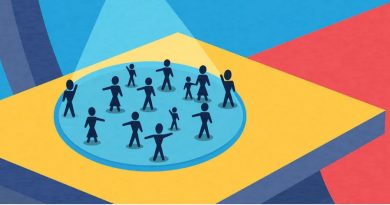NASA helps students launch into new school year with space-related educational resources
The space agency has a lot of materials on offer.
As students head back to school, NASA is ready with resources for students, teachers, and families.
From kindergarteners to college students and beyond, NASA has resources and opportunities available that are designed to inform and excite students and to involve them in the space agency’s many upcoming initiatives.
“We hope to enlist students in joining us on NASA’s exciting journey,” Kris Brown, Deputy Associate Administrator for NASA’s Office of STEM Engagement, told Space.com. (STEM stands for “science, technology, engineering, and math.”) “We’ve got, in particular, a number of really exciting mission milestones coming up over the fall.”
Among these milestones is the launch of the James Webb Space Telescope, a highly anticipated observatory that will build on the successes of NASA’s iconic Hubble Space Telescope. Resources and lesson plans that allow students to learn about the telescope include the James Webb Space Telescope STEM Toolkit and the James Webb Fun Pad, an activity book designed for young students in grades K-4. The telescope is set to launch in December.
NASA’s Artemis program, which aims to put the first woman and the first person of color on the moon later this decade, is scheduled to get off the ground with the launch of Artemis 1, an uncrewed mission around the moon, in late November or December. Artemis missions will use new technology to explore the moon’s surface and will also prepare NASA to eventually get the first humans to Mars. Educational resources include the STEM Forward to the Moon activity guide.
Students can also compete in NASA’s Artemis Student Challenges. The competitions, which are open to students from middle to graduate school, challenge students to design and produce science and engineering experiments and technologies, many related to the Artemis missions. The Student Launch challenge, for instance, tasks teams of U.S. college students and select middle and high school students with designing, building, and flying high-powered rockets that carry science or engineering experiments. The deadline to submit a proposal for the Student Launch challenge is Sept. 20.
NASA’s Perseverance rover and Ingenuity helicopter landed on Mars in February 2021, and both of their missions are ongoing. Educators can use the Mission to Mars Students Challenge and materials like those in the Mars 2020 STEM toolkit to teach students about the missions and the design process scientists to go through to prepare to land on Mars. (Mars 2020 is the official name of Perseverance’s mission.)
NASA also has challenges related to observing and studying Earth and near-Earth space, including the TechRise Challenge, in which teams of students compete to design and build experiments for suborbital launches, either on a rocket or a high-altitude balloon. There’s also a new satellite launching in September called Landsat 9, which is the latest in the Landsat series of satellites that observe Earth from orbit. NASA is inviting students to share art inspired by images in its Landsat Image Gallery on social media with the hashtag #LandsatCraft.
NASA’s student internship and fellowship programs have various positions open to high school through graduate students. Despite not being able to host interns in person due to the coronavirus pandemic, NASA welcomed over 1,000 remote interns this summer and will have 618 new interns across its centers this fall. While the summer and fall remote internships are a departure from NASA’s usual in-person programs, they do provide some advantages, said Katherine Brown, NASA’s Public Affairs Officer for education. For instance, students who might not ordinarily be able to leave home or travel long distances to be near a NASA center are able to participate. NASA will begin accepting applications for its spring and summer 2022 internships on Oct. 1.
NASA’s STEM @ Home initiative also gives students and families access to information on STEM topics and NASA’s work. The three sets of materials for elementary, middle, and high school students include articles, activities, videos, and instructions for at-home science experiments. Resources are also available on STEM topics for both formal classroom education and informal education at places like science centers, museums, and libraries, which NASA helps fund through its Museum and Informal Education Alliance.
This school year is sure to be a challenging one for students. Some may be returning to an in-person classroom after over a year of virtual instruction, while others may be continuing with remote classes. Kris Brown said that she hopes NASA resources can provide fun ways for students to learn that can augment whatever teachers have planned for this difficult year and “give them a bit of an outlet and a way to get engaged in something that’s really exciting.”
Source: https://www.space.com/nasa-space-education-resources-school-year-2021?utm_source=SmartBrief&utm_medium=email&utm_campaign=AC59823B-4C3C-4F57-8D2A-7EDD2B31AA42&utm_content=FA7D173E-D16E-4125-8B23-42F269A92B2C&utm_term=AEE6C64D-A551-4448-AC86-73E9EA97DDFE




